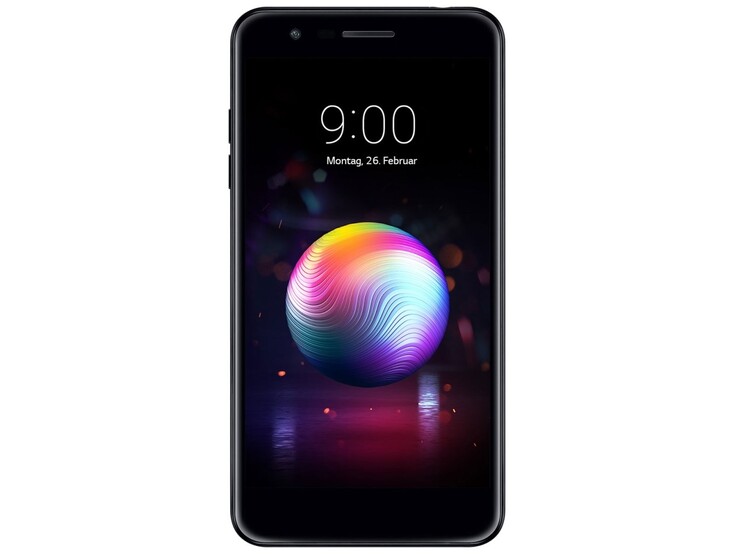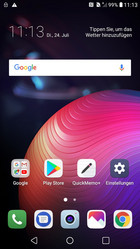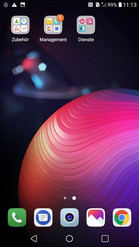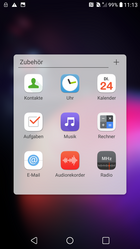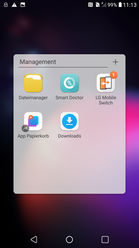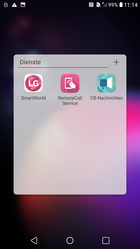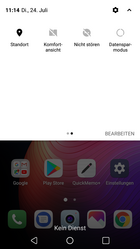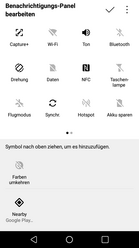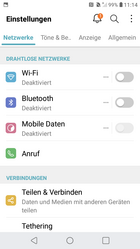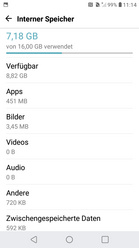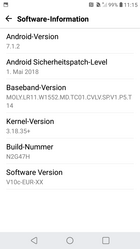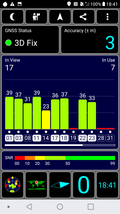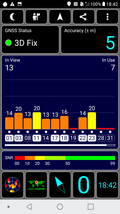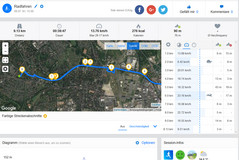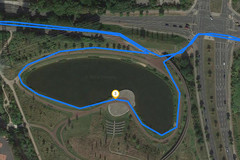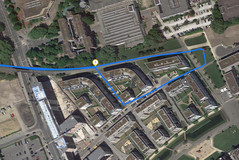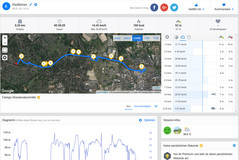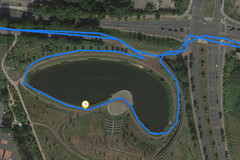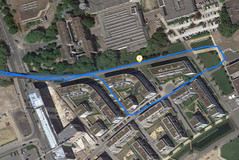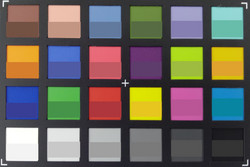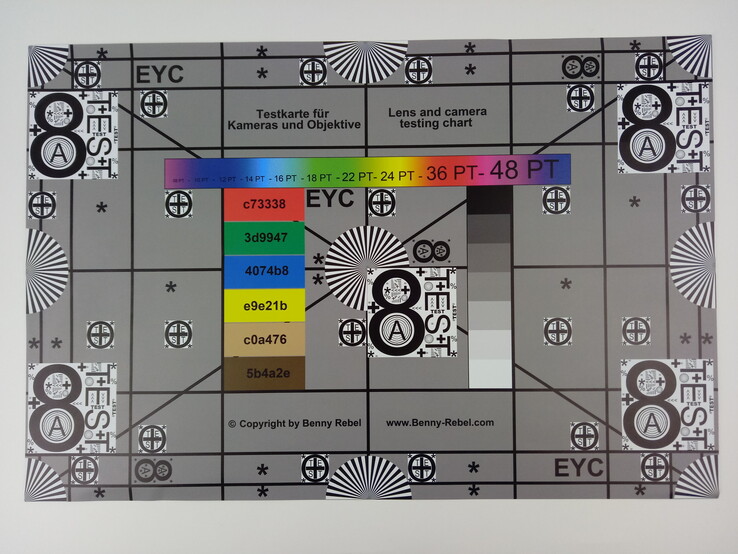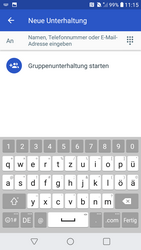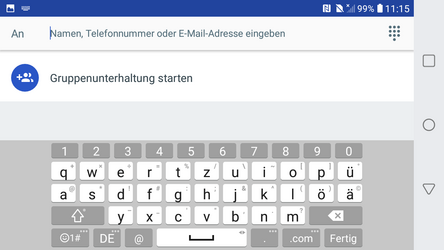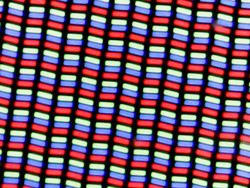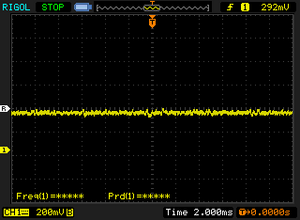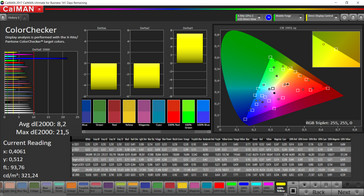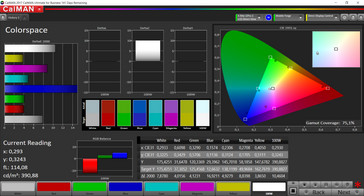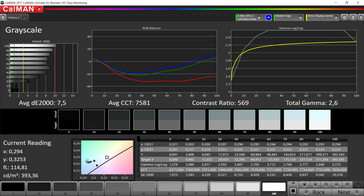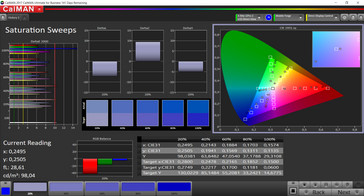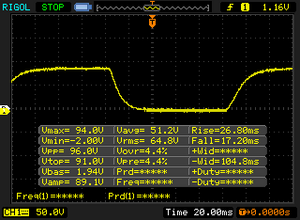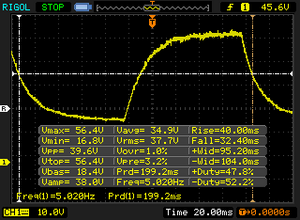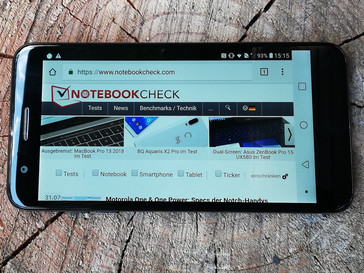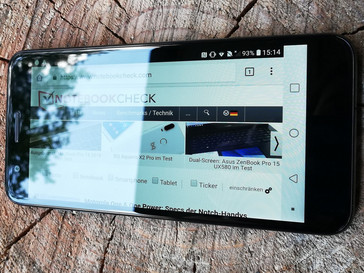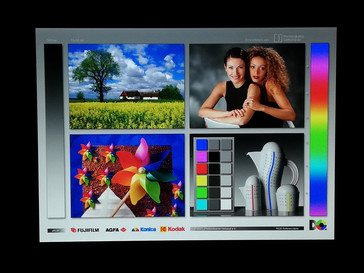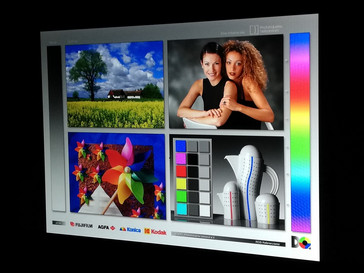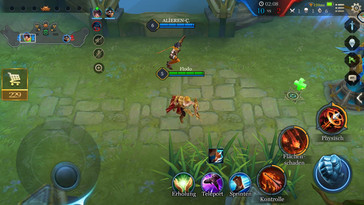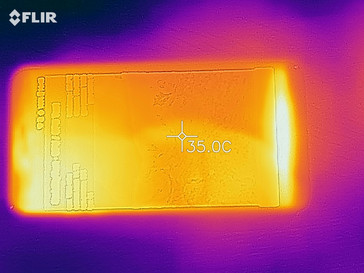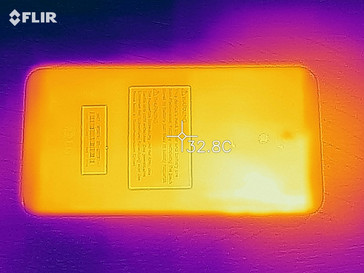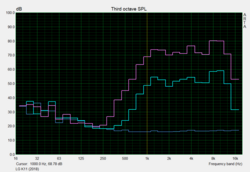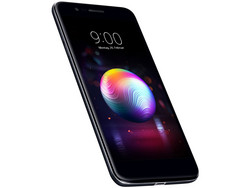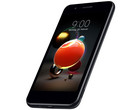LG K11 Smartphone Review
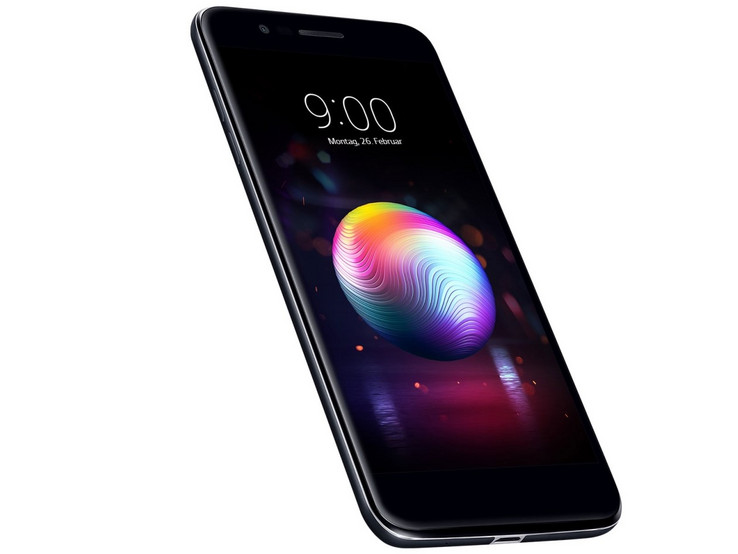
LG has a smartphone for every category from flagships like the LG V30 and the LG G7 ThinQ to budget devices like the LG K series. Our current test device falls into the latter category and will attract attention from buyers looking for a rugged smartphone on a budget.
The LG K11 is equipped with a MediaTek MT6750 SoC, an ARM Mali-T860 MP2 GPU, 2 GB RAM and 16 GB of internal storage. The device packs in a 5.3-inch display, a 3,000 mAh battery and a 13 MP rear-facing camera.
The K11 costs 130 Euros (~$150) at the time of writing, which is a price point with plenty of competition. We have chosen the LG K10 (2017), the Samsung Galaxy J6 (2018), the Xiaomi Redmi Note 5, the Motorola Moto G6 Play and the Huawei Y7 2018 as comparison devices.
Case
The K11 has a metal case that is available in either black or gold. The design is finished off with a silver trim that separates the display from the case.
The K11 has two physical buttons, but you would be forgiven for thinking that there was only one. There is the volume rocker on the left-hand side of the device, which is flanked by the SIM and microSD card tray on the opposite side. LG has integrated the power button within the fingerprint scanner, which is on the back of the device. We last saw LG employ this with the LG V30.
The case is scratch and MIL-STD impact resistant. Our test device is sufficiently sturdy to give us the impression that the K11 could survive a couple of drops relatively unscathed. We would still expect the device to pick up scratches though as these are difficult to prevent.
Connectivity
The K11 is equipped with a MediaTek MT6750 SoC, which integrates an ARM Mali-T860 MP2 GPU and 2 GB RAM. The K11 comes with 16 GB of eMMC flash storage that can be expanded with up to 2 TB microSD cards. The K11 can only format microSD cards as external memory though, so you will not be able to store apps on your microSD card.
The K11 has a 3.5 mm jack and a Micro USB 2.0 port, the latter of which does not support USB On-The-Go (OTG). There is also an FM Radio.
Software
The K11 ships with Android Nougat 7.1.2, with our test device running Android security patch level May 1, 2018, at the time of writing.
The K11 runs on an LG-customized version of Android that we have seen running on devices like the LG V30. LG’s UI resembles stock Android, but there are some visual changes and an overhauled Settings menu. LG also installs plenty of its own apps including LG Mobile Switch, LG SmartWorld, Smart Doctor, and an Audio Recorder among others.
Communication & GPS
The K11 supports GSM, UMTS and LTE Cat. 4, the latter of which allows our test device to achieve 150 Mb/s uplink and 50 Mb/s downlink LTE speeds. Our test device had good reception throughout our testing too.
The K11 also supports NFC, Bluetooth 4.2 and IEEE 802.11 b/g/n Wi-Fi networks. This means that the K11 supports 2.4 GHz but not 5 GHz Wi-Fi networks. Our test device is on par with our comparison devices in iperf3 Client Wi-Fi tests though; it cannot match the Xiaomi Redmi Note 5 for Wi-Fi speed, with the Redmi Note 5 around five times quicker than the K11.
| Networking | |
| iperf3 transmit AX12 | |
| Xiaomi Redmi Note 5 | |
| LG K11 | |
| Huawei Y7 2018 | |
| LG K10 2017 | |
| Motorola Moto G6 Play | |
| Samsung Galaxy J6 2018 | |
| iperf3 receive AX12 | |
| Xiaomi Redmi Note 5 | |
| Huawei Y7 2018 | |
| LG K10 2017 | |
| LG K11 | |
| Motorola Moto G6 Play | |
| Samsung Galaxy J6 2018 | |
Our test device takes a while to find a GPS lock indoors, but it is accurate up to five meters when it does so. Expectedly, our test device is more accurate outdoors with a location accuracy of up to three meters.
We took the K11 on a bike ride to test its location accuracy against a professional navigation device, the Garmin Edge 520. Our test is 98% accurate to the Garmin over the total distance covered, with the K11 recording a total distance covered of 9.13 km while the Garmin recorded 9.25 km. The K11 cannot match the Garmin for preciseness though, with our test device frequently struggling to maintain the Garmin’s accuracy through corners. Overall, the K11 should be suitable for general navigation tasks but nothing where you need precise location accuracy.
Telephone Function & Call Quality
The K11 uses the standard Android suite of apps for telephony, so there should be no surprises when you start using the device.
Call quality on our test device is good with background noise reliably filtered out. However, the maximum call volume could be higher as we occasionally struggled to hear our call partner over ambient noise in loud areas.
Calls over speakerphone work well too. The K11’s dual speakers are loud enough for making calls in the office or in other similarly loud environments.
Cameras
The K11 has a 13 MP rear-facing camera and an 8 MP front-facing camera. Shots taken with the front-facing camera often look underexposed and washed out, and objects only stay in focus if you keep the device still. There is also a slider to adjust skin tone before shooting, should you need it.
The rear-facing camera takes acceptable shots, but objects in dark areas lack any detail. The rest of the image is clear, but details are often blurry. Our test device fared better with macro photography though. Colors in macro shots look rich and objects are reproduced sharply, but dark areas still lack any definition.
Predictably, the camera struggles in low-light conditions with shots coming out blurry and underexposed. The camera app allows for some minor customization like filters and different resolutions, but there is no manual mode.
Videos suffer from the same drawbacks as still images and there is the same lack of customization options. The K11 has an image stabilizer, which works best at correcting minor shakes, but it cannot compensate for bigger sudden movements.
Our test device struggles to reproduce colors accurately; most colors are too light while black and dark grey tones are too dark when compared to reference colors.
The K11 does a better job at reproducing our test chart under controlled lighting conditions though. Fine lines are visible in the middle of our chart even with our zoomed shot, although things start to blur as you get towards the edges of the image.
Accessories & Warranty
The K11 comes with a USB wall charger, a USB Type-A to Micro USB cable and a SIM tool. LG does not currently sell any K11 specific accessories.
The K11 comes with 24 months manufacturer’s warranty. Please see our Guarantees, Return policies and Warranties FAQ for country-specific information.
Input Devices & Operation
LG preinstalls its keyboard app as the K11’s default, which is reasonably fast to type on and has numerous customization options. You are not bound to use the keyboard though and there are many other reputable alternatives on the Google Play Store from which to choose.
The touchscreen works well with inputs recognized accurately and quickly. The positional sensor worked well throughout our testing too.
While the rear-mounted fingerprint sensor quickly unlocks our test device, we had to precisely place our finger for it to do so.
Display
The K11 has a 5.3-inch IPS display with a 16:9 aspect ratio and a 1280x720 native resolution. X-Rite i1Pro 2 gives our test device an average maximum brightness of 384.7 cd/m², which is considerably darker than both the Xiaomi Redmi Note 5 and the Motorola Moto G6 Play. Conversely, the K11 is 9% brighter than the LG K10 (2017) and 24% brighter than the Samsung Galaxy J6 (2018). Our test device has a 93% uniformly bright display, which is on par with the best of our comparison devices. In daily use, this means that large areas of color will look brighter on some parts of the display than on others.
| |||||||||||||||||||||||||
Brightness Distribution: 93 %
Center on Battery: 394 cd/m²
Contrast: 597:1 (Black: 0.66 cd/m²)
ΔE ColorChecker Calman: 8.2 | ∀{0.5-29.43 Ø4.77}
ΔE Greyscale Calman: 7.5 | ∀{0.09-98 Ø5}
75.1% sRGB (Calman 2D)
Gamma: 2.6
CCT: 7581 K
| LG K11 IPS, 1280x720, 5.3" | Samsung Galaxy J6 2018 Super AMOLED, 1480x720, 5.6" | Xiaomi Redmi Note 5 IPS, 2160x1080, 6" | Motorola Moto G6 Play IPS, 1440x720, 5.7" | Huawei Y7 2018 IPS, 1440x720, 6" | LG K10 2017 IPS, 1280x720, 5.3" | |
|---|---|---|---|---|---|---|
| Screen | 24% | 63% | 66% | 38% | 23% | |
| Brightness middle (cd/m²) | 394 | 296 -25% | 518 31% | 614 56% | 393 0% | 384 -3% |
| Brightness (cd/m²) | 385 | 294 -24% | 532 38% | 593 54% | 365 -5% | 350 -9% |
| Brightness Distribution (%) | 93 | 93 0% | 94 1% | 90 -3% | 85 -9% | 85 -9% |
| Black Level * (cd/m²) | 0.66 | 0.23 65% | 0.29 56% | 0.29 56% | 0.36 45% | |
| Contrast (:1) | 597 | 2252 277% | 2117 255% | 1355 127% | 1067 79% | |
| Colorchecker dE 2000 * | 8.2 | 2.8 66% | 5.66 31% | 5.9 28% | 5.28 36% | 6 27% |
| Colorchecker dE 2000 max. * | 21.5 | 9.8 54% | 10.32 52% | 9.6 55% | 9 58% | 14 35% |
| Greyscale dE 2000 * | 7.5 | 1.9 75% | 6.8 9% | 5.5 27% | 4.2 44% | 5.9 21% |
| Gamma | 2.6 85% | 2.09 105% | 2.269 97% | 2.32 95% | 2.6 85% | 2 110% |
| CCT | 7581 86% | 6398 102% | 8564 76% | 7822 83% | 7086 92% | 8042 81% |
* ... smaller is better
Screen Flickering / PWM (Pulse-Width Modulation)
| Screen flickering / PWM not detected | |||
In comparison: 53 % of all tested devices do not use PWM to dim the display. If PWM was detected, an average of 8083 (minimum: 5 - maximum: 343500) Hz was measured. | |||
The K11 has a 0.66 cd/m² black value, which is much higher than our comparison devices. This relatively high black value contributes to a comparatively underwhelming 597:1 contrast ratio, which is around 25% of the Redmi Note 5’s contrast ratio.
In practical terms, this means that blacks look gray and colors are generally reproduced inaccurately. CalMAN highlights that the display struggles to accurately reproduce red tones.
Display Response Times
| ↔ Response Time Black to White | ||
|---|---|---|
| 44 ms ... rise ↗ and fall ↘ combined | ↗ 26.8 ms rise | |
| ↘ 17.2 ms fall | ||
| The screen shows slow response rates in our tests and will be unsatisfactory for gamers. In comparison, all tested devices range from 0.1 (minimum) to 240 (maximum) ms. » 98 % of all devices are better. This means that the measured response time is worse than the average of all tested devices (20.2 ms). | ||
| ↔ Response Time 50% Grey to 80% Grey | ||
| 72.4 ms ... rise ↗ and fall ↘ combined | ↗ 40 ms rise | |
| ↘ 32.4 ms fall | ||
| The screen shows slow response rates in our tests and will be unsatisfactory for gamers. In comparison, all tested devices range from 0.165 (minimum) to 636 (maximum) ms. » 99 % of all devices are better. This means that the measured response time is worse than the average of all tested devices (31.6 ms). | ||
Performance
The K11 is equipped with a MediaTek MT6750 SoC, which incorporates both an octa-core ARM A53 processor and an ARM Mali-T860 MP2 GPU. The SoC is complemented by 2 GB RAM and 16 GB of eMMC flash storage, but there are plenty of other more powerful devices priced under 200 Euros (~$231).
The K11 performs better than its predecessor in CPU benchmarks, but it cannot compete with our more expensive comparison devices. Our test device runs smoothly in daily use though, but the system performance starts to struggle when running more complex apps and games.
| AnTuTu v6 - Total Score (sort by value) | |
| LG K11 | |
| Samsung Galaxy J6 2018 | |
| Xiaomi Redmi Note 5 | |
| Motorola Moto G6 Play | |
| Huawei Y7 2018 | |
| LG K10 2017 | |
| Average Mediatek MT6750 (38547 - 44842, n=17) | |
| AnTuTu v7 - Total Score (sort by value) | |
| LG K11 | |
| Samsung Galaxy J6 2018 | |
| Xiaomi Redmi Note 5 | |
| Motorola Moto G6 Play | |
| Huawei Y7 2018 | |
| LG K10 2017 | |
| Average Mediatek MT6750 (52278 - 56639, n=10) | |
| PCMark for Android | |
| Work performance score (sort by value) | |
| LG K11 | |
| Samsung Galaxy J6 2018 | |
| Motorola Moto G6 Play | |
| Huawei Y7 2018 | |
| Average Mediatek MT6750 (3667 - 4532, n=13) | |
| Work 2.0 performance score (sort by value) | |
| LG K11 | |
| Samsung Galaxy J6 2018 | |
| Xiaomi Redmi Note 5 | |
| Motorola Moto G6 Play | |
| Huawei Y7 2018 | |
| LG K10 2017 | |
| Average Mediatek MT6750 (2782 - 3394, n=17) | |
| Basemark ES 3.1 / Metal - offscreen Overall Score (sort by value) | |
| Xiaomi Redmi Note 5 | |
| Average of class Smartphone (205 - 7731, n=34, last 2 years) | |
Our test device is on par with its predecessor in browser benchmarks, but again it struggles against our other comparison devices. The K11 is powerful enough for casual web-browsing though. Websites load quickly with images and videos taking somewhat longer to render.
| JetStream 1.1 - Total Score | |
| Xiaomi Redmi Note 5 (Chrome 67) | |
| LG K10 2017 (Chrome 57) | |
| Samsung Galaxy J6 2018 (Chrome 67.0.3396.87) | |
| Average Mediatek MT6750 (12 - 20.8, n=19) | |
| Motorola Moto G6 Play (Chrome 66) | |
| Huawei Y7 2018 (Chrome 66) | |
| LG K11 (Chrome 67) | |
| Octane V2 - Total Score | |
| Average of class Smartphone (2228 - 126661, n=195, last 2 years) | |
| Xiaomi Redmi Note 5 (Chrome 67) | |
| Samsung Galaxy J6 2018 (Chrome 67.0.3396.87) | |
| LG K10 2017 (Chrome 57) | |
| LG K11 (Chrome 67) | |
| Huawei Y7 2018 (Chrome 66) | |
| Motorola Moto G6 Play (Chrome 66) | |
| Average Mediatek MT6750 (1994 - 3506, n=19) | |
| Mozilla Kraken 1.1 - Total | |
| Average Mediatek MT6750 (11708 - 22627, n=19) | |
| LG K11 (Chrome 67) | |
| Motorola Moto G6 Play (Chrome 66) | |
| Huawei Y7 2018 (Chrome 66) | |
| Samsung Galaxy J6 2018 (Chrome 67.0.3396.87) | |
| LG K10 2017 (Chrome 57) | |
| Xiaomi Redmi Note 5 (Chrome 67) | |
| Average of class Smartphone (257 - 28190, n=155, last 2 years) | |
| WebXPRT 2015 - Overall | |
| Xiaomi Redmi Note 5 (Chrome 67) | |
| Samsung Galaxy J6 2018 (Chrome 67.0.3396.87) | |
| Huawei Y7 2018 (Chrome 66) | |
| Average Mediatek MT6750 (34 - 78, n=5) | |
| LG K10 2017 (Chrome 57) | |
* ... smaller is better
The K11 has underwhelming internal storage speeds. While they surpass the K10 (2017), the K11 cannot compete with our comparison devices, all of which are also equipped with eMMC flash memory.
MicroSD card performance is much better. Our test device achieves 61 MB/s sequential write and 82 MB/s sequential read speeds in AndroBench when tested with our Toshiba Exceria Pro M501 reference card. These speeds put the K11 on par with our comparison devices.
| LG K11 | Samsung Galaxy J6 2018 | Xiaomi Redmi Note 5 | Motorola Moto G6 Play | Huawei Y7 2018 | LG K10 2017 | Average 16 GB eMMC Flash | Average of class Smartphone | |
|---|---|---|---|---|---|---|---|---|
| AndroBench 3-5 | 8% | 33% | 98% | 2% | -14% | -34% | 1919% | |
| Sequential Read 256KB (MB/s) | 253 | 206.5 -18% | 287.6 14% | 243.7 -4% | 256 1% | 246.1 -3% | 164.5 ? -35% | 2248 ? 789% |
| Sequential Write 256KB (MB/s) | 48.32 | 100.5 108% | 121.6 152% | 135.8 181% | 71.5 48% | 43.6 -10% | 43 ? -11% | 1887 ? 3805% |
| Random Read 4KB (MB/s) | 45.8 | 27.05 -41% | 48.9 7% | 65.9 44% | 38.8 -15% | 25.1 -45% | 21.7 ? -53% | 299 ? 553% |
| Random Write 4KB (MB/s) | 13.16 | 12.37 -6% | 16.3 24% | 61.7 369% | 9.5 -28% | 10.8 -18% | 8.08 ? -39% | 346 ? 2529% |
| Sequential Read 256KB SDCard (MB/s) | 82.8 ? | 81.8 ? -1% | 83.4 1% | 83.2 ? 0% | 85 3% | 77.4 ? -7% | 59.1 ? -29% | |
| Sequential Write 256KB SDCard (MB/s) | 61.1 ? | 65.8 ? 8% | 62.4 2% | 60.7 ? -1% | 61.5 1% | 61.6 ? 1% | 39.8 ? -35% |
Games
The ARM Mali-T860 MP2 GPU can comfortably play relatively simple games like Arena of Valor and Dead Trigger 2. The GPU is only powerful enough to play more complex titles at low graphics settings though.
The touchscreen and positional sensor worked well and without issue throughout testing.
Emissions
Temperature
The K11 is a relatively cool device, but it will feel warm under load. Our test device averaged 28.8 °C at idle, with the hottest area reaching 31.4 °C. Our test device averages 34.5 °C under load, which will feel warm to the touch, but not uncomfortably so. The area around the earpiece reaches 37.1 °C though, which will feel particularly warm to the touch.
(+) The maximum temperature on the upper side is 37.1 °C / 99 F, compared to the average of 35.2 °C / 95 F, ranging from 21.9 to 247 °C for the class Smartphone.
(+) The bottom heats up to a maximum of 34 °C / 93 F, compared to the average of 34 °C / 93 F
(+) In idle usage, the average temperature for the upper side is 29.5 °C / 85 F, compared to the device average of 32.9 °C / 91 F.
Speakers
The K11 has two speakers, which have a relatively balanced sound and a good maximum volume, which we measured at 85.7 dB(A). The sound quality is good enough for occasional media consumption, but the speakers start booming at maximum volume.
Audio output via the 3.5 mm jack and Bluetooth is clean and will sound better than the device's speakers for listening to music for extended periods.
LG K11 audio analysis
(+) | speakers can play relatively loud (85.7 dB)
Bass 100 - 315 Hz
(-) | nearly no bass - on average 46.7% lower than median
(+) | bass is linear (5.4% delta to prev. frequency)
Mids 400 - 2000 Hz
(±) | reduced mids - on average 10.8% lower than median
(±) | linearity of mids is average (12.2% delta to prev. frequency)
Highs 2 - 16 kHz
(±) | higher highs - on average 5.7% higher than median
(+) | highs are linear (6.6% delta to prev. frequency)
Overall 100 - 16.000 Hz
(-) | overall sound is not linear (34.7% difference to median)
Compared to same class
» 85% of all tested devices in this class were better, 1% similar, 14% worse
» The best had a delta of 11%, average was 35%, worst was 134%
Compared to all devices tested
» 93% of all tested devices were better, 1% similar, 6% worse
» The best had a delta of 4%, average was 24%, worst was 134%
Samsung Galaxy J6 2018 audio analysis
(+) | speakers can play relatively loud (83.9 dB)
Bass 100 - 315 Hz
(-) | nearly no bass - on average 24.6% lower than median
(±) | linearity of bass is average (10% delta to prev. frequency)
Mids 400 - 2000 Hz
(+) | balanced mids - only 4.1% away from median
(+) | mids are linear (6.6% delta to prev. frequency)
Highs 2 - 16 kHz
(±) | higher highs - on average 5.6% higher than median
(±) | linearity of highs is average (7.2% delta to prev. frequency)
Overall 100 - 16.000 Hz
(±) | linearity of overall sound is average (21.2% difference to median)
Compared to same class
» 40% of all tested devices in this class were better, 8% similar, 52% worse
» The best had a delta of 11%, average was 35%, worst was 134%
Compared to all devices tested
» 58% of all tested devices were better, 7% similar, 35% worse
» The best had a delta of 4%, average was 24%, worst was 134%
Battery Life
Power Consumption
The K11 is a comparatively power-efficient device. Our test device consumes a maximum of 1.54 W at idle, which increases to a maximum of 6.16 W under load. The K11 is more efficient than all our comparison devices bar its predecessor and consumes considerably less power than the average of MediaTek MT6750 devices that we have currently tested.
| Off / Standby | |
| Idle | |
| Load |
|
Key:
min: | |
| LG K11 3000 mAh | Samsung Galaxy J6 2018 3000 mAh | Xiaomi Redmi Note 5 4000 mAh | Motorola Moto G6 Play 4000 mAh | Huawei Y7 2018 3000 mAh | LG K10 2017 2800 mAh | Average Mediatek MT6750 | Average of class Smartphone | |
|---|---|---|---|---|---|---|---|---|
| Power Consumption | -8% | -56% | -5% | -26% | 3% | -42% | -38% | |
| Idle Minimum * (Watt) | 0.57 | 0.85 -49% | 1 -75% | 0.68 -19% | 0.9 -58% | 0.76 -33% | 1.13 ? -98% | 0.847 ? -49% |
| Idle Average * (Watt) | 1.48 | 1.51 -2% | 2.6 -76% | 1.8 -22% | 1.9 -28% | 1.59 -7% | 2.02 ? -36% | 1.446 ? 2% |
| Idle Maximum * (Watt) | 1.54 | 1.57 -2% | 2.9 -88% | 1.83 -19% | 2.3 -49% | 1.61 -5% | 2.42 ? -57% | 1.63 ? -6% |
| Load Average * (Watt) | 4.56 | 4.21 8% | 5 -10% | 3.38 26% | 4.7 -3% | 3.24 29% | 5.21 ? -14% | 6.95 ? -52% |
| Load Maximum * (Watt) | 6.16 | 5.88 5% | 8.2 -33% | 5.67 8% | 5.7 7% | 4.15 33% | 6.56 ? -6% | 11.3 ? -83% |
* ... smaller is better
Battery Life
The K11 has a 3,000 mAh battery, which is 200 mAh more than its predecessor. We tested the K11’s battery life by putting our test device through our Wi-Fi battery life test, during which we run a script that simulates the load required to render websites. Our test device lasts 12 h 21 m in this test, which is around three-and-a-half hours longer than its predecessor. The K11 is only eclipsed by our comparison devices that have a 1,000 mAh larger battery. Overall, the K11 has impressively long battery life given its battery capacity.
The included power supply fully recharges our test device in around two hours.
| LG K11 3000 mAh | Samsung Galaxy J6 2018 3000 mAh | Xiaomi Redmi Note 5 4000 mAh | Motorola Moto G6 Play 4000 mAh | Huawei Y7 2018 3000 mAh | LG K10 2017 2800 mAh | |
|---|---|---|---|---|---|---|
| Battery runtime | ||||||
| WiFi v1.3 (h) | 12.4 | 11.8 -5% | 14.5 17% | 14.8 19% | 10.4 -16% | 8.9 -28% |
Pros
Cons
Verdict
The LG K11 is a good budget smartphone that is powerful enough for most everyday tasks. The K11 should particularly appeal to those who want a sub-200 Euro (~$231) smartphone that supports high volume microSD cards. System performance is acceptable, but the K11 can hardly keep up with many of our comparison devices.
The LG K11 will suit those who have moderate hardware demands and who are looking for an affordable smartphone that is both scratch- and shock-resistant.
The main selling point of the K11 is its robust case which is both scratch and MIL-STD shock-resistant. The camera is passable for occasional photos and the hardware is powerful enough for relatively light use. Moreover, the K11 has decent battery life, but this is something in which the competition also excels.
LG K11
- 07/31/2018 v6 (old)
Mike Wobker


